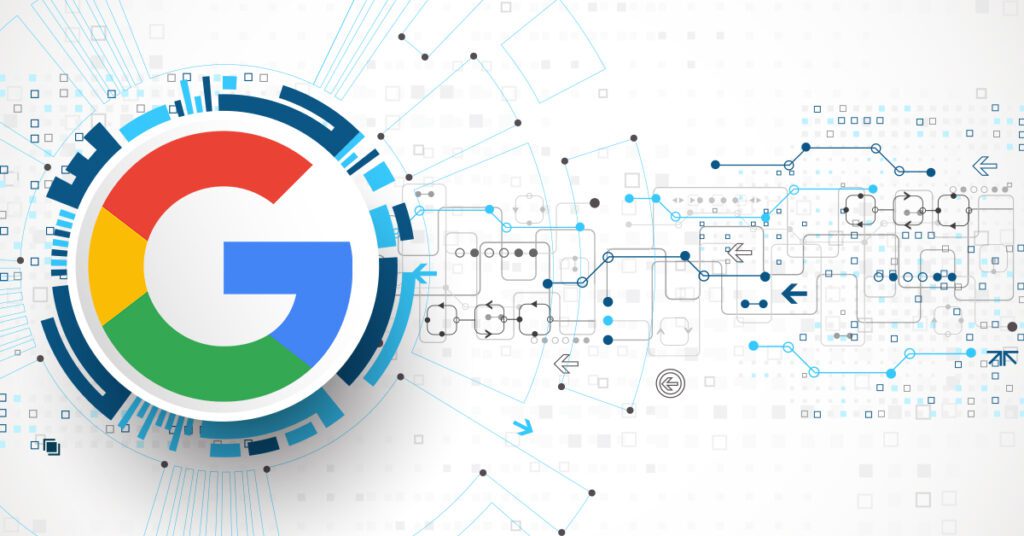A few weeks ago at Google Marketing Next, Google Attribution was released. Search strategists rejoiced, brands got all teary-eyed and marketing managers popped champagne bottles. Their attribution prayers have finally been answered. On the other hand, in our office eyes rolled, laughs were stifled and chairs emptied with the announcement. Yes, the integration between DoubleClick Search (DCS) and Google Analytics is definitely a step up from the attribution models offered in AdWords, but it’s still a free model that only uses Google campaign data to measure the influence on marketing decisions. If a brand is doing anything outside of AdWords (direct publisher buys, paid social, TV, print, direct mail, press releases, sponsored content, etc.), there are major issues with using Google Attribution.
Conversion Windows
Think of a product you’ve purchased in the past month. Not toothpaste or a product that you run down an aisle and pick up, but a purchase decision that you really put thought into – a car, a TV, a pair of headphones, etc. How long did you evaluate that brand? Was it longer than 90 days? If your brand has a product that costs more than $100, odds are the time from first interaction with the brand to the actual purchase is more than 90 days. AdWords and Analytics conversion tracking only report up to 90 days before the lookback window expires. That means that if someone came to a brand’s site 91 days ago, then did a branded search and converted on day 91, it would be reported as if that customer came to the site once and converted on the same day according to AdWords and Analytics. In Google Attribution, it’s the same thing because it also relies on conversion tracking that can’t go beyond a 90-day window.
Example: An ecommerce client that we’ve been working with for a few years implemented 3rd party attribution models with tracking windows that exceed 365 days. The goal was to isolate the first interactions with the brand that are converting into sales and scale those opportunities in order drive a more efficient return-on-ad-spend (ROAS). In Analytics, 42% of their transactions have a lag time of zero days with 20% at 61 – 90 days. So Google Attribution will show same-day transactions for almost half of their campaigns. The 3rd party model tells a different story. The same time period is showing an average lag time of 63 days from first interaction to transaction. Of those transactions, 30% of their total transactions occur past the 90-day window. Optimizing campaigns based on Google Attribution would skew 30% of their revenue to the wrong originating channel.
The Google Vacuum
The biggest issue that I have with Google Attribution is that it only measures interactions and brand engagement that come from Google products. Yes, it integrates with Google Analytics which tracks paid and unpaid channel sessions that are tagged appropriately so it means everything is evaluated the same, correct? That couldn’t be more wrong. Google Analytics only tracks paid and unpaid sessions within a brand’s site. It doesn’t factor in impression-based interactions with digital media or traditional media that lead to a branded search or direct navigation. AdWords and DCS can measure view-through conversions and will report on those within Google Attribution. The result is performance will appear greater on campaigns running through Google AdWords because Google Attribution will be going off of view-through and click-through conversions. Any external (non-Google) campaigns will only reflect click-through conversion performance because Google Attribution only integrates with DCS, Google Analytics and AdWords. It does not integrate with other 3rd party platforms.
Example: The same ecommerce client in the previous example is running a cross-channel media mix including search, email and display campaigns with publishers and programmatic partners. According to their Analytics account, only 0.5% of their revenue for the past 6 months is attributed to display campaigns. Branded search and email account for 98.1% of their revenue. Based on the Analytics data, the client should take all spend out of the display campaigns and invest in branded search and email. But customers don’t magically perform a branded search. The email fairy doesn’t just add new accounts to a CRM while a brand is sleeping. In Google Attribution, it’ll show a brand that it’s wasting money because it doesn’t integrate with 3rd party ad servers or attribution data. The same client is running a 3rd party attribution model that integrates traditional and digital media into its model. Because it measures both click- and view-through interactions across all channels, we’re able to show a 424% ROAS in a 3rd party model rather than a -88% ROAS if we used AdWords and Google Analytics data.
A great villain once said, “if you’re good at something, never do it for free.” That’s just as applicable to Google Attribution as it is to the DC Universe. It’s a free product that relies on shorter conversion windows, can’t pull in 3rd party data sets and skews performance towards Google products. Brands rely on being able to pull in additional data sets accurately. If they can’t, then they’re basing their decisions on skewed data. Spend will be scaled up with Google products, and marketing managers will wonder why they haven’t seen an increase in leads or revenue. It’s because they’re working with an incomplete model. If you’re a search agency or a brand that’s 100% invested in only the Google Display Network and Google Search, this is a good product to use, but keep in mind, free isn’t always a good thing.
Let us know your thoughts!










Hello!
Thanks for the usefull information but I have a few questions:
1. Google Attribution will show us cross device conversions? I mean i will be able to see some reports such as:
Path conversions general : mobile – desktop – 20 conversions
Path conversions/channel: Organic Channel : Mobile – desktop – 14 conversions
Or other reports which show us something like that.
2. Did Google Attribution was released or will be in the near future?
Thanks in advance for your answers!
Great article Trey – and very well explained. I don’t think most people know or understand how measurement windows work, so that paints a scary picture. Unfortunately, I think the new tools are definitely built for SMB’s – and my guess is that the Google 360 and larger paid products probably tailor more toward the big data audience so they can compete with the likes of Adobe, etc. That said – if I’m an SMB, and the only thing I’m doing is Google products – then it’s still a nice tool. But I don’t know many that don’t at least try Bing, local TV, radio, print, Yelp, etc… So I’m with you – what the industry is celebrating, I’m thinking others are doing it better, they just don’t have the audience Google commands.
Hey Catalin,
Thanks for writing in!
To answer your questions, as far as we can tell Google Attribution will be able to show cross device conversions, however, it’ll only apply to click-through conversions reported Analytics or view-thru and click-thru conversions in AdWords only. For example, if you’re running Facebook campaigns and a customer sees a placement on their phone and converts through a branded search on their computer, Google Attribution records that as a desktop branded search only. It can’t show that Facebook actually originating that customer so there will be a large data set missing from your attribution model if you’re running any type of marketing outside of AdWords. Other 3rd party models can capture that path-to-purchase.
As far as a release date for Google Attribution, it’s a rolling release over the next few months. Some brands already have access to it while other will get access leading up to Q4.
I hope this helped answer your questions. If you have any more feel free to comment. We always love talking about attribution and linking paths-to-purchase to consumer goals!
Thanks,
Trey
Thanks for writing this.
I agree that Google plays nice with its own products which makes it difficult to integrate with others however I was under the impression that this new tool would allow imports of third party or offline performance/sales data.
Although not an ideal process this might close some of the gap, what are your thoughts?
Hey Gabe,
Thanks for writing in!
Great question. Google Attribution will only be able to import data that has been imported into Google Analytics or AdWords so yes that’s possible to import that data. However, it won’t be complete. A great example is a lead gen campaign. In AdWords, you’re able to assign GCLIDs to any lead data that comes through. Once that person goes from lead to a sale (whether online or offline), you match back that GLCID to the sale so the sales funnel is complete. The downside is it’ll only track activity that’s running in AdWords.
If you’re running a LinkedIn campaign or Facebook campaign against those same audiences, you won’t be able to import the pixel that’s assigned to those interactions to AdWords or Analytics. It’ll only show click-thru interactions in Analytics and not view-thru interactions so you won’t be able to see if a campaign through a 3rd party platform has influenced a conversion. With other 3rd party attribution models, that level of tracking is possible.
To your point though, yes it does close some of the gap, but it only closes the gap on data flowing through AdWords and Analytics. Any brand interactions through PR, traditional or other media channels, there’s better tools out there that close that gap completely.
I hope this helps. Let me know if you have any additional questions. I always love talking through conversion tracking and attribution models!
Trey
Seriously great post. I tilted at the windmill too, in a post on TUNE’s blog:
http://www.tune.com/blog/welcoming-advertising-companies-attribution-game/
Key points:
– Google attribution is great, as long as your customers only ever touch Google.
– Facebook attribution is great, as long as your customers only ever touch Facebook.
Trey,
In your answer to Catalin above you mentioned 3rd party solutions that can track Facebook ad views. Can you please elaborate on who some of those are.
Thanks.
Jared
Hey Jared,
Thanks for writing in and great question!
We use C3Metrics for our 3rd party attribution provider because they eliminate any unviewed impression data which is pretty important. If a newsfeed ad is already loaded on your device, Facebook (and other platforms) still count that impression because it was technically served onto your device. The downside is you can’t just add in C3’s tracking on its own, but their tracking has to be partnered with an impression tracker through an adserver and added into the “view tags” tracking within Facebook.
It’s a little more involved process than tracking other channels, but it gives you a much better idea on how your paid social campaigns are performing especially for outreach strategies.
Let me know if you have any additional questions.
Thanks!
Trey
I’ve done work with ElToro.com and they have a very unique way of tracking attribution. They match a physical mailing address and the IP address that originates at that house. So following a campaign you can provide them with the address of conversions and they can prove efficacy through a matchback analysis against a target and control group.
On top of this you have access to all the usual digital tracking, but the offline component is what we have been waiting for to capture all conversions.
Hey Neil,
Thanks for commenting!
Unfortunately from the way we measure attribution, ElToro is not attribution tracking. I’m sure it does very well at matching back physical addresses to IP and retarget to those IP addresses, but that’s based on last-click. It’s unable to pull in data from other campaign sources (Social, Programmatic Display, etc.) and attribute conversion weighting to those channels based on the first point of interaction. If a brand’s goal is to generate leads from new audience segments, they’d most likely weight the first point of interaction more heavily over the converting placement. By matching phyiscal address to IP address, that only tells a marketer that those individuals have interacted with the brand instead of where in the purchase path they interacted. Also, ElToro isn’t able to exclude performance from non-viewable impressions delivered.
Thanks!
Trey